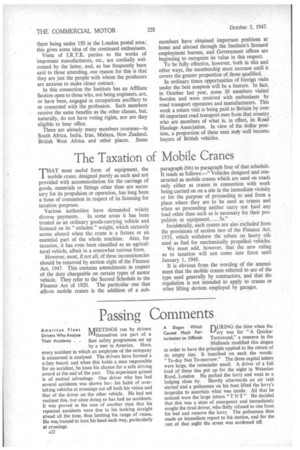The Taxation of Mobile Cranes
Page 24

If you've noticed an error in this article please click here to report it so we can fix it.
THAT most useful form of equipment, the mobile crane, designed purely as such and not provided with accommodation for the carriage of goods, materials or fittings other than are necessary for its propulsion or operation, has long been a bone of contention in respect of its licensing for taxation purposes.
Various authorities have demanded widely diverse payments.. In some areas it has been treated as an ordinary goods-carrying vehicle and licensed on its " unladen " weight, which certainly seems absurd when the crane is a fixture or an essential part of the whole machine. Also, for taxation, it has even been classified as an agricultural vehicle, albeit in a somewhat curious form.
However, most, if not all, of these inconsistencies should be removed by section eight of the Finance Act, 1947. This contains amendments in respect of the duty chargeable on certain types of motor vehicle. They refer to the Second Schedule to the Finance Act of 1920. The particular one that affects mobile cranes is the addition of a sub paragraph (bb) to paragraph four of that schedule. It reads as follows:—" Vehicles designed and constructed as mobile cranes which are used on roads only either as cranes in connection with work being carried on on a site in the immediate vicinity or for the purpose of proceeding to and from a place where they are to be used as cranes and when so proceeding neither carry nor haul any load other than such as is necessary for their pro pulsion or equipment 5s."
Incidentally, such cranes are also excluded front the provisions of section two of the Finance Act, 1935, which withdrew the rebate on heavy oils used as fuel for mechanically propelled vehicles.
We must add, however, that the new ruling as to taxation will not come into force until January 1, 1948.
It is obvious from the wording of the amendment that the mobile cranes referred to are of the type used generally by contractors, and that the regulation is not intended to apply to cranes or other lifting devices employed by garages.




















































































